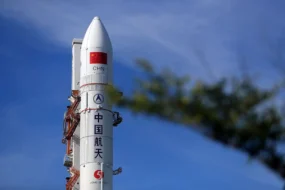Between the One Big Beautiful Bill Act (BBB) and the Trump administration’s budget request, the Space Force could see a budget of $40.2B in fiscal 2026—representing a 40% increase YoY.
That’s according to The Aerospace’s Corporation’s Center for Space Policy and Strategy, which released a breakdown of the fiscal 2026 defense space budget, outlining how the Trump administration is prioritizing space-based capabilities within the DoD.
“I think Golden Dome is the central story of the budget for defense,” Sam Wilson, The Aerospace Corporation’s director of strategy and national security, told Payload. “This is a signature effort guiding how they’re approaching national security, and there is a heavy focus on space within that.”
What’s in a dome? About 16% of national security funds in the BBB reconciliation act, passed in July, is directed toward funding the Golden Dome. This initial investment of $24.4B includes:
- $9.2B for pre- and post-launch threat tracking;
- $8.7B for terrestrial elements, including ground based missile defense systems and radars;
- $5.6B for space-based missile intercepts;
- $910M for launch and test range infrastructure.
However, the Golden Dome could stretch to even higher heights. In a press conference in May, President Donald Trump said the Golden Dome could cost as much as $175B during the next three years.
In another estimate, the Congressional Budget Office (CBO) said that just the space-based missile interceptors line item could cost between $161B and $542B, depending on the size and scope of the Golden Dome’s coverage area.
If the Golden Dome is built out to the extent suggested in Trump’s original executive order—covering “peer, near-peer, and rogue adversaries”—the final product might be on a much larger scale than the CBO estimate, according to Wilson.
Elsewhere in space: Beyond the $24.4B of specific Golden Dome funding approved in the BBB, the Trump administration’s FY2026 budget request reveals an effort to increase the Space Force’s capabilities more broadly. The administration has requested greater funds in satcom capabilities, workforce, facilities and military personnel, as well as command and control capabilities.
The Trump administration’s request for the Space Force budget also continues the trend toward greater focus on commercial services, and away from DoD built satellite programs. For example, $190M is included for proliferated LEO satcom services, which would make these services the largest commercial space program outside of launch.




